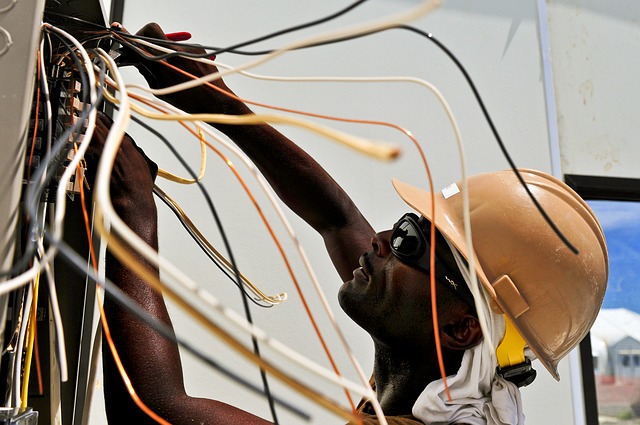The Ultimate Guide to Electrical Installation: Tips and Methods for a Safe and Effective Home Electrical Wiring System
In the world of home maintenance, few facets are as critical yet frequently ignored as the electric circuitry system. By checking out the nuances of electric security steps and energy-saving methods, this comprehensive overview will shed light on the intricacies of home electrical wiring, encouraging individuals to take cost of their household's electrical framework.
Comprehending Electrical Safety And Security Measures
To make sure the security of both people and residential or commercial property, understanding and implementing correct electrical security procedures is extremely important in any home circuitry job. Electrical energy is an effective pressure that can be harmful otherwise handled with caution. Among the fundamental security measures is ensuring that all electrical job is executed by certified specialists that adhere to neighborhood building regulations and guidelines. It is important to perform a comprehensive inspection of the electrical system before beginning any circuitry job to determine potential dangers or concerns that need to be dealt with.
Moreover, making use of the ideal tools and equipment is necessary for maintaining safety throughout electric setups. Shielded handwear covers, voltage testers, and protective eyewear are a few of the fundamental safety and security equipment that ought to be used to stop electrical shocks or mishaps. It is likewise crucial to de-energize circuits prior to servicing them and to classify all circuits and breakers plainly to stay clear of confusion.

Vital Tools for Home Electrical Wiring
Ensuring the appropriate implementation of electrical safety and security measures in home electrical wiring tasks involves using a specific collection of essential devices made to help with the setup procedure properly and safely. Some of the secret tools required for home electrical wiring jobs consist of a voltage tester for inspecting live cables, cable strippers for getting rid of insulation from cords, a cord cutter for precisely cutting cables to size, a screwdriver established for securing electric parts, electrical tape for insulation and safeguarding connections, a cord ripper for removing cable television sheathing, and a multimeter for determining voltage, existing, and resistance.
Step-by-Step Electrical Installment Guide
Starting an electric installation project needs meticulous preparation and adherence to safety standards. Prior to beginning any job, guarantee you have an in-depth strategy detailing the format of the electrical system, consisting of the positioning of outlets, buttons, and components. Take right into account the power demands of each device to determine the news appropriate wire scale and circuit breaker sizes.
The first action in the installment procedure is to shut down the power supply to the area where you will certainly be working. Use a voltage tester to validate that the circuits are de-energized before touching any cords. Next off, thoroughly remove existing components or electrical outlets and disconnect the cords.
When installing brand-new wiring, run wires through wall surfaces and ceilings, protecting them in position with ideal installations. Follow local building regulations and producer instructions for correct cord setup and connections. BRE Electrical. Ensure to label cables for very easy identification and future maintenance

Troubleshooting Common Electrical Wiring Issues
Having completed the installment process as laid out in the previous subtopic, repairing common electrical wiring concerns is a vital skill for making certain the safety and security and performance of your electrical visite site system. One usual concern is a stumbled breaker, usually triggered by overloaded circuits or a brief circuit. To fix this, find the breaker panel, determine the tripped breaker by searching for the one not fully in the "on" placement, and reset it by turning it totally to "off" and after that back to "on." An additional common problem is a damaged electrical outlet, defined by no power or intermittent power supply. Ensure the electrical outlet is not managed by a switch, after that make use of a voltage tester to look for power. If there is no power, turn off the circuit, inspect the electrical wiring connections for any kind of loose or broken cables, and replace the electrical outlet if needed. Constantly flickering lights can indicate loosened wiring links or an overloaded circuit. To address this, check and tighten up all cable links in the impacted fixtures and switches and rearrange the load on the circuit to stabilize the electrical need. Frequently inspecting and promptly addressing these common circuitry concerns will certainly maintain the safety and performance of your home electric system.
Tips for Energy-Efficient Electric Solutions
For optimum energy performance in electrical systems, applying wise techniques and utilizing energy-saving modern technologies is critical. One vital suggestion for i loved this attaining an energy-efficient electric system is to upgrade to LED illumination. Correct insulation and sealing of home windows, doors, and electric outlets can likewise protect against energy loss, eventually reducing the workload on electric systems.
Conclusion
Finally, carrying out correct security actions, utilizing important devices, complying with a detailed installment overview, troubleshooting common concerns, and incorporating energy-efficient ideas are crucial for a risk-free and reliable home circuitry system. By adhering to these practices, house owners can make certain the longevity and functionality of their electric installments. It is very important to prioritize security and effectiveness when it pertains to electric operate in order to prevent potential risks and to preserve a trusted electric system in the home.